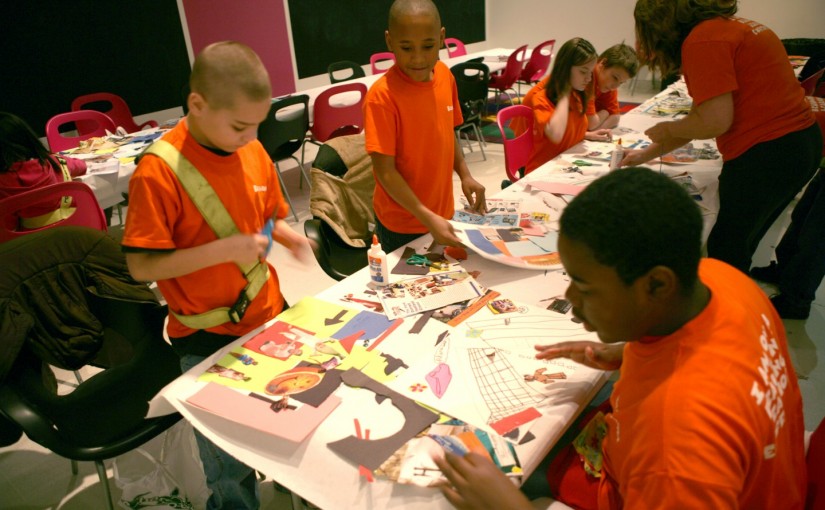It is well known among teachers that children respond well to art. Whether they are simply looking at it, learning about it or creating it, using art in the classroom is a fantastic way to get kids engaged and offers many benefits for their development.
According to studies, children who regularly participate in art are more likely to achieve academically, and are more likely to score higher marks in standardized testing. Studies also show that children enjoy coming to school to participate in art lessons as they enjoy the hands on focus of art lessons and producing pieces which they can take home and show off.
Art offers a very tangible sense of achievement for children –they learn the skills required, study the techniques and then produce something which demonstrates what they can do, to their audience (usually parents or grandparents). It helps to build confidence and encourages students to think positively about their education and about what they are capable of doing. Art is also a fantastic way to foster creativity in children young and old and helps them to develop their critical thinking skills as they learn to observe, analyse and synthesize the world through an artistic lens.
Statistically, engagement in art is linked to higher test scores, lower drop-out rates at high school level and increased engagement with their community as an adult. Even if you are not an artistic person, or you are teaching a group of students who are not particularly artistic, you should still consider integrating some art into your classroom. Using art can liven things up and expose your students to character building experiences.
Depending on the level of your students, you may want to try offering a variety of lessons using different mediums.
Here is our list of 60 different art lessons for your classroom. Try making:
• Nature collages
• Portrait sketches
• Cartoon strips
• Shoe-box puppet theaters
• Finger paintings
• Scrapbooks
• Painting of fruit or vegetables
• Mobiles
• Fairy gardens in an ice cream container
• String art
• Melted crayon art
• Dyed pasta jewelry
• Homemade snow globes
• Paper snowflakes
• Origami
• Paper Mache’
• Paper lanterns
• Paper chains
• Yarn Easter eggs
• Potato stamped paper or fabric
• Decorated newsprint for personalized gift-wrap
• Sock puppets
• Salt dough pinch pots
• Christmas wreaths
• Paper dolls with split pins
• Christmas cookie ornaments
• Homemade greeting cards
• Dyed Easter eggs
• Paper beads
• Clay masks
• Painted national flags
• Create or color in coloring pages
• Picture frames from card
• Fingerprint trees
• Weaved paper coasters
• Button art
• Yarn wrapped letters
• Paint chip bookmarks
• Tie Dyed shirts
• Cups decorated with a sharpie
• Leaf paintings
• Coin rubbings
• Rock paintings
• Geometric drawings
• Foil art
• Paper plate masks
• Puffy paintings
• Bird feeders
• Painted pinecones
• Surrealist glue art
• Mixed media boards
• Milk art
• Modern tin art
• Bottle cap murals
• Body tracings
• Grape and toothpick sculptures
• Leaf printing on fabric
• Air dry dough beads
• Shaving cream marbled paper
• Plaster of Paris sandcasts
Whichever lessons you choose to work on with your class, remember – exposing children to art is not just about teaching them how to recognize a Picasso. It is about exposing young minds to experiences that will change their view of art, and the world.

Leave a Reply
You must be logged in to post a comment.